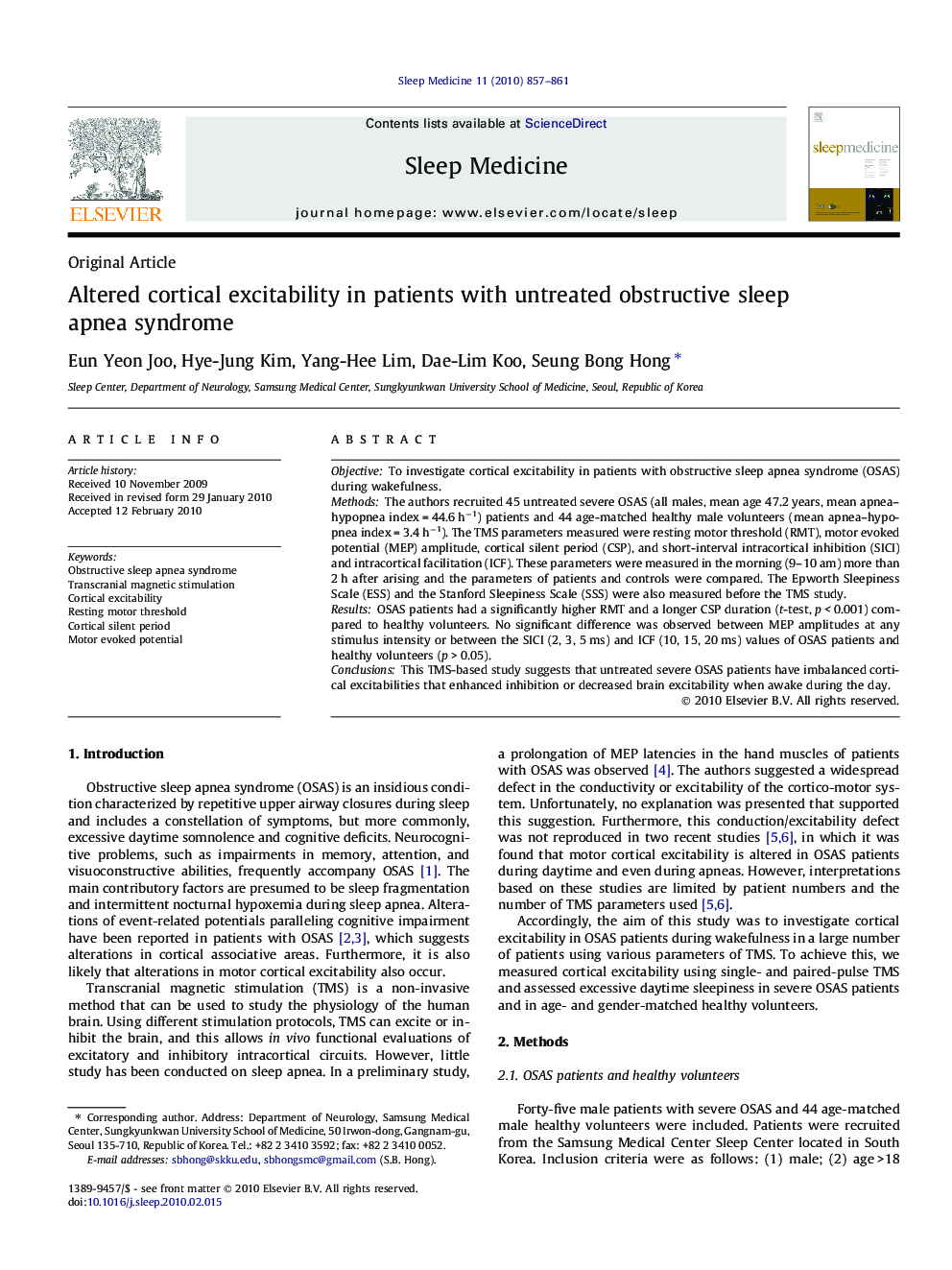| Article ID | Journal | Published Year | Pages | File Type |
|---|---|---|---|---|
| 3177212 | Sleep Medicine | 2010 | 5 Pages |
ObjectiveTo investigate cortical excitability in patients with obstructive sleep apnea syndrome (OSAS) during wakefulness.MethodsThe authors recruited 45 untreated severe OSAS (all males, mean age 47.2 years, mean apnea–hypopnea index = 44.6 h−1) patients and 44 age-matched healthy male volunteers (mean apnea–hypopnea index = 3.4 h−1). The TMS parameters measured were resting motor threshold (RMT), motor evoked potential (MEP) amplitude, cortical silent period (CSP), and short-interval intracortical inhibition (SICI) and intracortical facilitation (ICF). These parameters were measured in the morning (9–10 am) more than 2 h after arising and the parameters of patients and controls were compared. The Epworth Sleepiness Scale (ESS) and the Stanford Sleepiness Scale (SSS) were also measured before the TMS study.ResultsOSAS patients had a significantly higher RMT and a longer CSP duration (t-test, p < 0.001) compared to healthy volunteers. No significant difference was observed between MEP amplitudes at any stimulus intensity or between the SICI (2, 3, 5 ms) and ICF (10, 15, 20 ms) values of OSAS patients and healthy volunteers (p > 0.05).ConclusionsThis TMS-based study suggests that untreated severe OSAS patients have imbalanced cortical excitabilities that enhanced inhibition or decreased brain excitability when awake during the day.
